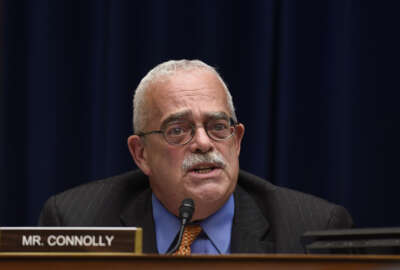When a new administration takes power, lots of federal workers know it’s time to cover their assets, at least for awhile. New presidents — regardless of political party or personality — always promise to streamline the government, cut costs, eliminate excess jobs and red tape and get rid of outdated, silly or dangerous regulations. It almost seems like it’s part of the oath of office, but …
After a time they lose interest or traction, or their efforts are blocked by the opposition party in Congress. Or there’s a war or threat somewhere diverting them from “reforming” the government. But a lot of long-time Washington watchers say these times really may be changing and the old script may be rewritten.
More often than not, a Republican in the White House scares many feds (and all their unions) while Democrats in residence at 1600 Pennsylvania Ave NW often wind up disappointing government workers simply because they chose to work for the government. Many feds feel they spend their entire careers between a rock and a hard place — like now.
If you believe most polls and most of the press, a very, very popular president (Barack Obama) has been replaced by one with very low approval ratings, Donald Trump. It’s been less than two weeks and many people already long for the good old days.
But while his approval ratings were very high, especially in his final year, the Obama presidency didn’t do much for feds. While people may have felt good about their jobs as public servants, it wasn’t reflected in their paychecks or their take-home pay. There was a two-year pay freeze proposed by a White House panel that became a three-year freeze when Congress got into the act. The White House also invented the sequestration process that imposes automatic across-the-board cuts in agency spending and budgets in certain cases. Although implemented only once (March 2013), sequestration hangs over the government each year like a giant load of (think of your smelliest nightmare substance). When workers did get raises they were in the 1 percent to 1.5 percent range, which didn’t keep pace with increases in health and long-term care insurance plans.
So far, President Donald Trump’s major fix-the-government action is the 90-day hiring freeze. Like freezes before it (Republican and Democratic), it exempts many occupations — medicine, health, homeland security, national defense — in agencies such as the Defense Department, Justice, DHS and the Veterans Affairs Department. What comes after the freeze — maybe something like letting agencies fill only two or three vacancies — could be the bad news.
Meantime, lots of feds and groups (unions, management associations, etc.) that represent them believe this is a year when they will be playing big-time defense to thwart serious efforts to mess with their pay, their retirement system, the employee-retirees’ share of health premiums and their Medicare Part B premiums. For the most part, anything you’ve got appears to be on somebody’s hit list. And with one party in control of the House, Senate and White House, gridlock — which shielded many proposed benefit changes over the last eight years — may not be a “problem.”
So what’s in the line of fire? Today at 10 a.m. on our Your Turn radio show we’ll be talking with Jessica Klement. She worked on Capitol Hill before becoming legislative director of the National Active and Retired Federal Employees. Unlike many other federal unions that endorsed former Secretary of State Hillary Clinton for the presidency, NARFE says it doesn’t take sides. Its political action committee gives to pro-fed politicians from both parties.
This year, NARFE and other groups believe they will face a hard fight protecting feds and retirees from changes in their health program. They expect there will be a major effort to trim the government’s share of health premium payments (now about 71 percent of the total premium), a move Klement says could cost the typical fed or retiree family as much as $50,000 (in higher premiums) over a 10-year period.
Other items on the hit list include:
- A plan to raise employee payroll contributions to their FERS retirement program as much as 6 percent.
- Reduce the rate of return for the G-fund (treasury securities) in the federal Thrift Savings Plan.
- Basing retirement benefits on the employees highest five-year average salary. Currently, the employee’s high-3 formula is used.
- Reducing or eliminating the defined benefit (FERS) retirement plan in favor of a private-sector style pension program based on the employees 401k plan contributions and earnings and Social Security.
Most of the above fall into the round-up-the-usual-suspects category. That is, they are regularly on the hit list, but after much hand-wringing and lobbying, they go away.
Except — some experts say — everything could change this year.
Listen if you can, and tell a friend or colleague. The show begins at 10 a.m. EST streaming over Federal News Radio or in the DC metro area at 1500 AM.
Nearly Useless Factoid
By Michael O’Connell
Soft cheeses, such as cheddar, melt around at 150 degrees Fahrenheit.
Source: Sargento Food Service
Copyright
© 2024 Federal News Network. All rights reserved. This website is not intended for users located within the European Economic Area.
